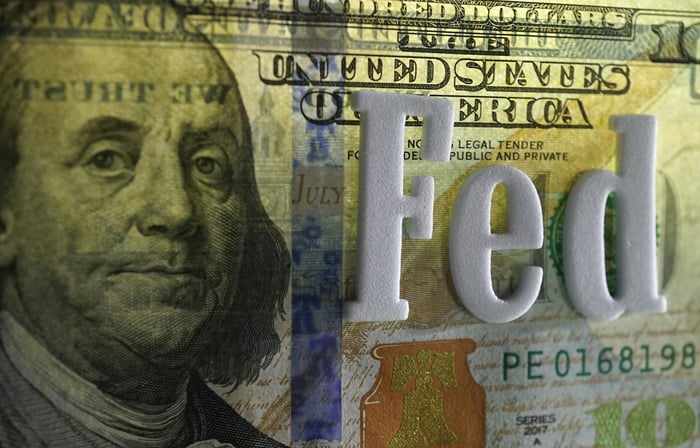Artificial intelligence (AI) has dominated the stock market narrative since early 2023, but another storyline is starting to replace it.
After enduring interest rates over 5% for more than a year, investors are looking forward to interest rates coming down, and are rotating into small-cap stocks to prepare for that move. While the Federal Reserve held interest rates steady in its rate decision on Wednesday, Fed Chair Jerome Powell opened the door to a rate cut at the next meeting in September.
He said the economy was making progress toward its goal of 2% inflation, and seemed to imply that the central bank would cut rates if the current trajectory continued. Stocks climbed higher in response to the news.
Expectations of interest rate cuts have already begun moving markets. Investors are moving out of large-cap tech stocks and small-cap stocks, and there are likely to be several winners as rates come down. Among them are dividend stocks, as lower rates on fixed income should encourage bond investors to rotate back to dividend stocks. Let's take a look at three great buys today.

Image source: Getty Images.
1. Dominion Energy
Dominion Energy (D -2.22%) might seem like a boring electric and gas utility, but the company has an important differentiator from most other utilities.
Dominion is based in Virginia, meaning it serves the biggest data center market in the world in Northern Virginia, and the data center industry is exploding alongside generative AI. Models like ChatGPT are known for consuming large amounts of power.
That indirectly gives Dominion exposure to the AI boom. The company said that power used by data centers doubled from 2018 to 2022, and is expected to double again by 2028.
The company is forecasting 4.5% to 5.5% growth this year in its Virginia unit, which makes up most of its business. Accelerating data center expansion is supporting higher rates and demand. Dominion expects to connect 15 data centers this year on top of the 94 it's connected over the last five years, though the data centers are getting bigger with the rise of AI.
Dominion is also a solid dividend stock, offering a yield of almost 5%. Like most high-yield stocks, its shares tumbled in 2022 as the Fed raised rates, but it should recoup some of those losses once rates start to come down. Plus, AI-driven demand for data centers should support underlying growth in the business.
2. Realty Income
The real estate investment trust (REIT) industry is often a good place to look for dividend stocks, and that's especially true now. REITs are required by law to pay out at least 90% of profits as dividends, so they tend to offer high yields. They're also likely to be among the biggest beneficiaries from lower rates as they borrow money to acquire new properties that they then rent out. Falling interest rates will therefore make it cheaper for these companies to expand, and also help them refinance debt at lower rates.
One of the easiest REITs to own is Realty Income (O -1.60%), which specializes in triple net leases on stand-alone retail properties, typically for recession-proof tenants like Walgreens and 7-Eleven. By using triple net leases, Realty Income makes tenants responsible for insurance, property taxes, and maintenance, reducing its financial risk. That formula has been a successful one, as the stock has a long-term history of outperforming the S&P 500.
Finally, Realty Income is a popular dividend stock to own because it pays investors monthly. It also offers a dividend yield of 5.3%, so it's a good prospect for fixed-income investors to rotate into as rates come down.
3. Truist Financial
Regional banks have largely struggled with higher interest rates. The crisis that sank Silicon Valley Bank and others in March 2023 cast a long shadow in the industry. Higher rates have also cooled borrowing demand among consumers, home buyers, and businesses.
Truist Financial (TFC -2.66%) has been one of the better performers in the industry despite those headwinds. The stock is now trading at a 52-week high, though it's still well below its earlier peak from before rates began to soar.
The regional bank is largely focused on the U.S. Southeast, one of the fastest-growing regions in the country, setting it up for long-term growth. Its business is also balanced across investment banking, commercial, and consumer banking, and management has handled the high-rate environment well.
Finally, management said it expects to see a benefit from lower rates, and for loan demand to start to come back as rates fall.
Truist is also a generous dividend payer, offering a yield of 4.9%. Banks tend to be cyclical businesses, so Truist and its peers are likely to move higher, assuming the Fed can achieve the soft landing, bringing rates down while keeping the economy humming.





